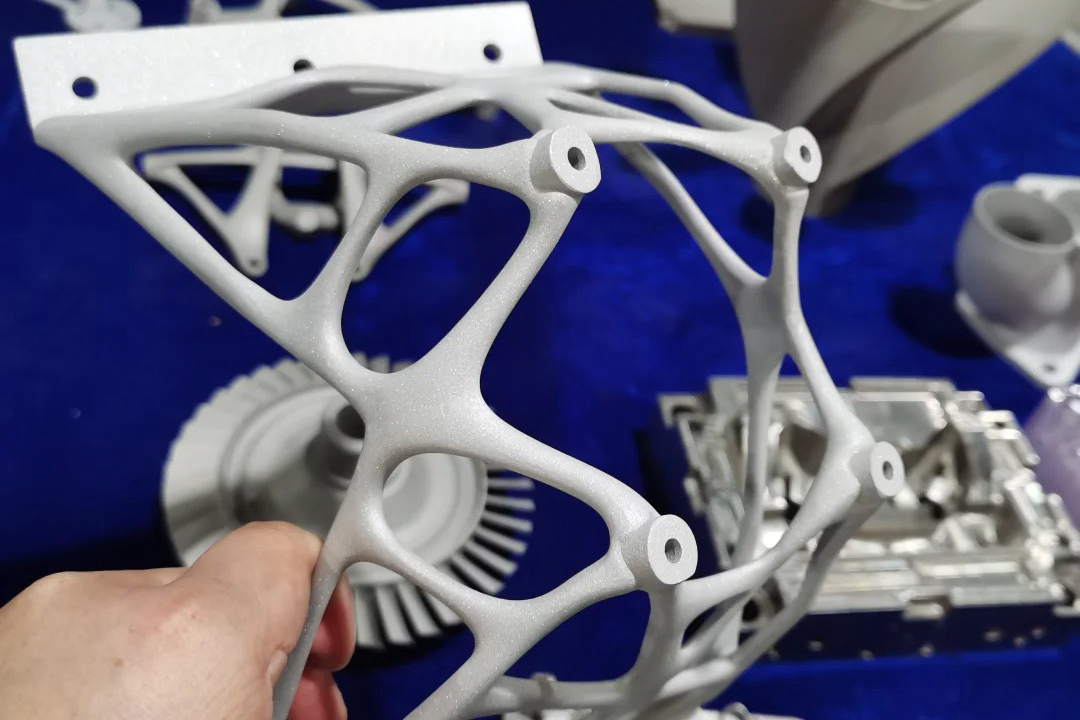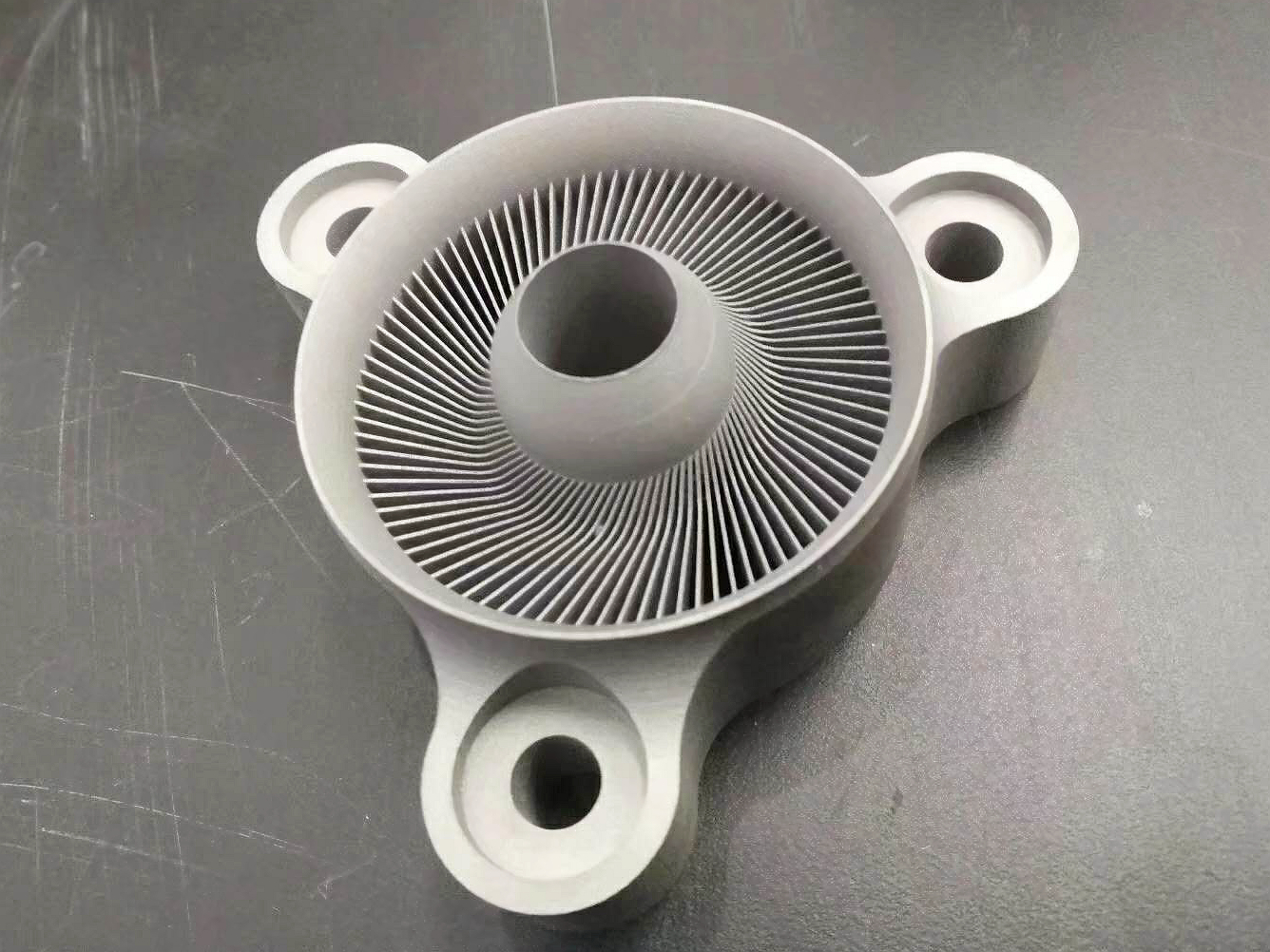Stainless Steel SUS15-5 PH
SUS15-5 PH 3D Printing Materials Introduction
Stainless Steel SUS15-5 PH is a martensitic precipitation-hardened stainless steel offering high strength, toughness, and corrosion resistance. It performs exceptionally well under heat-treated conditions, maintaining dimensional stability and hardness for critical load-bearing parts.
Using stainless steel 3D printing, SUS15-5 PH is ideal for aerospace components, precision tooling, and structural machinery where strength, fatigue resistance, and corrosion durability are essential.
SUS15-5 PH Similar Grades Table
Country/Region | Standard | Grade or Designation |
|---|---|---|
USA | ASTM | 15-5 PH |
UNS | Unified | S15500 |
ISO | International | X5CrNiCuNb16-5 |
China | GB/T | 0Cr15Ni5Cu4Mo |
Germany | DIN/W.Nr. | 1.4545 |
SUS15-5 PH Comprehensive Properties Table
Category | Property | Value |
|---|---|---|
Physical Properties | Density | 7.78 g/cm³ |
Melting Point | 1400–1450°C | |
Thermal Conductivity (100°C) | 18.0 W/(m·K) | |
Electrical Resistivity | 85 µΩ·cm | |
Chemical Composition (%) | Iron (Fe) | Balance |
Chromium (Cr) | 14.0–15.5 | |
Nickel (Ni) | 3.5–5.5 | |
Copper (Cu) | 2.5–4.5 | |
Niobium (Nb) + Tantalum (Ta) | 0.15–0.45 | |
Mechanical Properties | Tensile Strength (H900) | ≥1310 MPa |
Yield Strength (0.2%) (H900) | �1170 MPa | |
Elongation at Break (H900) | ≥10% | |
Hardness (HRC) | 38–45 | |
Modulus of Elasticity | 200 GPa |
3D Printing Technology of SUS15-5 PH
SUS15-5 PH is typically processed through Selective Laser Melting (SLM), Direct Metal Laser Sintering (DMLS), and Binder Jetting, enabling the production of complex, heat-treatable parts with excellent dimensional accuracy and structural performance.
Applicable Process Table
Technology | Precision | Surface Quality | Mechanical Properties | Application Suitability |
|---|---|---|---|---|
SLM | ±0.05–0.2 mm | Excellent | Excellent (post-aged) | Aerospace, High-Load Tooling |
DMLS | ±0.05–0.2 mm | Very Good | Excellent | Structural Parts, Robotics |
Binder Jetting | ±0.1–0.3 mm | Moderate | Good (with HIP) | Fixtures, Housings, Brackets |
SUS15-5 PH 3D Printing Process Selection Principles
SLM is best suited for parts requiring exceptional strength and precision, especially after aging heat treatment (H900), delivering tensile strength above 1300 MPa.
DMLS is ideal for fatigue-resistant components, such as mechanical joints or structural assemblies, with fine lattice or infill geometries.
Binder Jetting enables low-cost fabrication of larger parts, with HIP and sintering improving final density and isotropic strength.
SUS15-5 PH 3D Printing Key Challenges and Solutions
Internal stress buildup during printing can lead to distortion. Aging heat treatment at 480–620°C (H900–H1150) refines the martensitic structure and stabilizes geometry.
Porosity may arise due to insufficient fusion. Optimal scan speed (800–1000 mm/s), laser power (300–400 W), and layer height (~30 µm) ensure density >99.8%.
Surface finish limitations (Ra 6–15 µm) can be resolved with CNC machining and electropolishing for improved sealing and wear interfaces.
For high-fatigue applications, HIP is applied to eliminate internal voids and maximize part lifecycle.
Typical Post-Processing for SUS15-5 PH 3D Printed Parts
Aging Heat Treatment hardens the martensitic structure, increasing tensile strength and fatigue resistance in load-bearing applications.
CNC Machining improves dimensional accuracy and tolerance control for interfaces, threads, and sealing surfaces.
Electropolishing enhances corrosion resistance and reduces surface roughness for hydraulic, aerospace, and fluid-contact components.
Passivation removes free iron on the surface, forming a protective chromium oxide layer to improve long-term corrosion resistance.
Industry Application Scenarios and Cases
SUS15-5 PH is ideal for:
Aerospace: Brackets, struts, and mounts subjected to cyclic loads and vibration.
Precision Tooling: Molds, dies, and inserts with high hardness and dimensional stability.
Industrial Robotics: Load-bearing shafts, grippers, and motion assemblies.
Defense & Energy: Components exposed to pressure, fatigue, and moderate corrosion.
A recent tooling case study showed 3D printed SUS15-5 PH die inserts with optimized cooling channels, post-H900 treatment, and CNC finishing—cutting cycle time by 20% and extending tool life by 50%.
FAQs
What’s the difference between SUS15-5 PH and 17-4 PH in additive manufacturing?
Which industries benefit most from SUS15-5 PH 3D printed parts?
What heat treatment is required after printing SUS15-5 PH components?
How is dimensional accuracy maintained in large SUS15-5 PH parts?
Can SUS15-5 PH be used for high-cycle fatigue applications?



